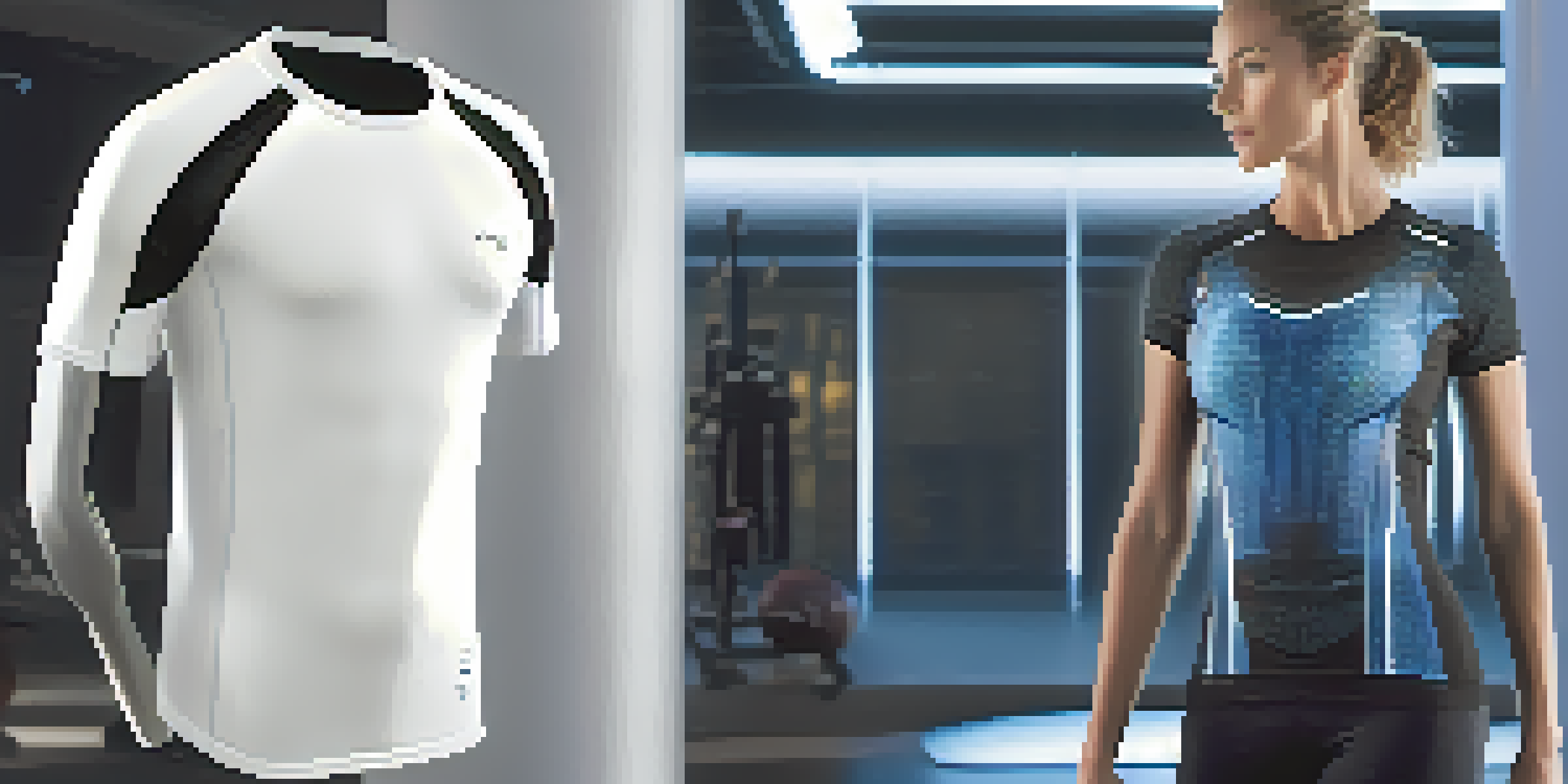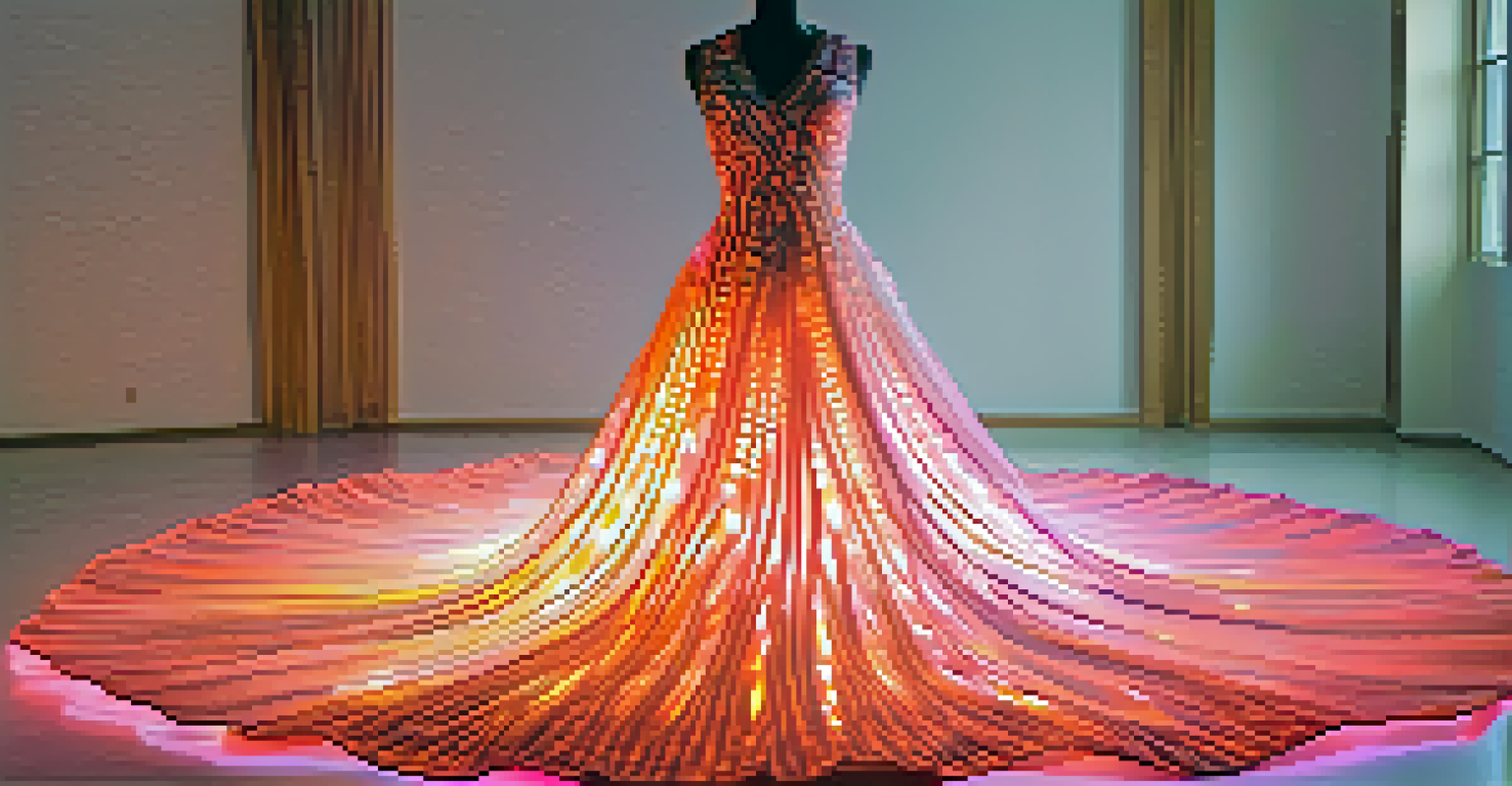Smart Textiles: The Future of Wearable Technology in Fashion

What Are Smart Textiles and How Do They Work?
Smart textiles, also known as e-textiles, are fabrics that integrate technology to provide interactive features. They can sense environmental changes, track health metrics, and even respond to user commands. Imagine a shirt that can monitor your heart rate or pants that can adjust their temperature based on the weather.
The future of fashion is not just about aesthetics; it’s about technology that enhances our everyday lives.
The technology behind smart textiles often includes sensors, actuators, and conductive fibers that communicate with devices. For instance, conductive threads can transmit data from your body to a smartphone app, allowing you to keep track of your fitness goals without any extra gadgets. This seamless integration of technology into everyday clothing is what sets smart textiles apart from traditional fabrics.
As these textiles advance, they promise to create more personalized and functional clothing options. The blend of fashion and technology opens up exciting possibilities for innovative designs that cater to the modern lifestyle, making everyday wear smarter and more efficient.
The Benefits of Smart Textiles in Fashion
One of the most significant advantages of smart textiles is their ability to enhance comfort and performance. For athletes, garments that wick moisture away while regulating temperature can make a huge difference in performance. Imagine running in a fabric that not only keeps you cool but also monitors your hydration levels!

Additionally, smart textiles can contribute to health monitoring, making them invaluable for individuals with chronic conditions. Wearable technology integrated into clothing can track vital signs, alerting users to potential health issues before they become serious. This proactive approach to health is a game-changer in how we view personal well-being.
Smart Textiles Enhance Daily Wear
Smart textiles integrate technology into clothing, offering features like health monitoring and temperature regulation for improved comfort and performance.
Moreover, these textiles can lead to a more sustainable fashion industry. By using materials that can adapt to different conditions, brands can reduce waste and promote longevity in clothing. Smart textiles pave the way for a future where fashion is not just stylish but also responsible and functional.
Current Applications of Smart Textiles in Fashion
Smart textiles are already making waves in various fashion segments, from sportswear to high-end fashion. Brands like Under Armour and Nike have incorporated moisture-wicking and temperature-regulating technologies into their athletic wear. This innovation not only enhances performance but also meets consumer demand for multifunctional clothing.
Sustainable fashion is not a trend; it’s a necessity, and smart textiles can lead the way to a more responsible industry.
In the realm of high fashion, designers are experimenting with LED-embedded fabrics that can change colors or display patterns. Imagine wearing a dress that lights up or shifts hues based on your mood or environment! This playful interaction between the wearer and the garment creates a unique and personalized fashion experience.
Additionally, smart textiles are being utilized in everyday clothing, such as jackets with built-in heating elements for cold climates. These practical applications show that smart textiles are not just a trend but are becoming integral to our daily wardrobes, offering both style and utility.
Challenges in the Smart Textile Industry
Despite the exciting potential of smart textiles, several challenges remain. One major hurdle is the durability of these materials, as integrating technology into fabric can sometimes compromise its lifespan. Designers and manufacturers are continually working to create textiles that can withstand everyday wear and tear while maintaining their smart functions.
Another challenge lies in the cost of production. Smart textiles often require specialized materials and technology, making them more expensive than traditional fabrics. This can limit accessibility for consumers and pose a barrier to widespread adoption in the fashion industry.
Sustainability in Fashion Innovations
The development of smart textiles can promote sustainability by creating longer-lasting garments and utilizing eco-friendly materials.
Lastly, there are concerns regarding data privacy and security. As smart textiles collect personal health and activity data, ensuring this information is protected becomes crucial. The industry must address these privacy issues proactively to build consumer trust and encourage growth in this innovative field.
The Role of Sustainability in Smart Textiles
Sustainability is a hot topic in the fashion industry, and smart textiles have the potential to contribute positively. By developing fabrics that can adapt to various conditions, brands can create clothing that lasts longer and reduces waste. For instance, a jacket that can change its insulation properties based on the weather minimizes the need for multiple garments.
Moreover, many smart textiles are being made from recycled or eco-friendly materials. This shift towards sustainable sourcing helps reduce the environmental footprint of fashion production. As consumers become increasingly eco-conscious, brands that prioritize sustainability in their smart textile offerings will likely see greater support.
Incorporating smart technologies into sustainable practices not only benefits the planet but also enhances the appeal of the garments. A jacket that's both stylish and environmentally friendly is a win-win for consumers who want to look good while making responsible choices.
Future Trends in Smart Textile Development
Looking ahead, the future of smart textiles is bright with endless possibilities. Innovations in nanotechnology and materials science could lead to even more advanced fabrics that offer improved functionality. For example, researchers are exploring textiles that can generate energy from movements, turning your outfit into a power source for small devices.
Moreover, as artificial intelligence continues to evolve, we may see garments that learn and adapt to the wearer’s preferences over time. Imagine a pair of shoes that molds to your feet for maximum comfort or a shirt that adjusts its fit based on your activity level. These advancements could revolutionize how we experience clothing.
Future Trends in Smart Textile Tech
Advancements in nanotechnology and AI may lead to smart textiles that adapt to user preferences and integrate with technologies like augmented reality.
Finally, the integration of smart textiles with other technologies, such as augmented reality (AR), can create immersive fashion experiences. A simple dress could transform into a canvas for digital art, allowing wearers to express themselves in dynamic ways. The combination of smart textiles and cutting-edge technology promises to reshape the fashion landscape as we know it.
How to Incorporate Smart Textiles into Your Wardrobe
If you're excited about the potential of smart textiles, incorporating them into your wardrobe can be a fun experiment. Start by looking for brands that offer smart athletic wear, such as moisture-wicking shirts or temperature-regulating leggings. These pieces not only enhance your workouts but also add a tech-savvy edge to your style.
For everyday wear, consider investing in accessories made from smart textiles, such as jackets with built-in heating elements or shirts that monitor your activity levels. These innovations can enhance both comfort and functionality in your daily life, proving that tech and fashion can coexist beautifully.

Lastly, keep an eye on emerging trends and new releases in the world of smart textiles. As technology continues to advance, staying informed will help you make savvy choices when it comes to your wardrobe. Embracing smart textiles now means being a part of the future of fashion, where style meets functionality.